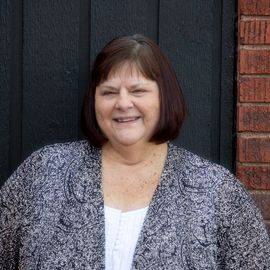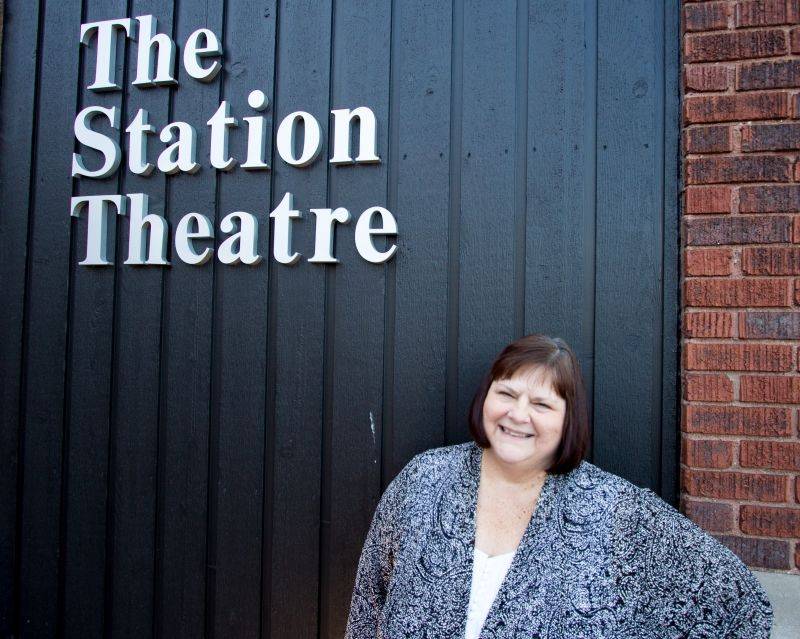
Kay Bohannon Holley has been known by a lot of titles in her life, including, at one early juncture, “Bossy Britches Bohannon.” Among her other (well-deserved) titles are actor and director, of course, and to attendees of the Station Theatre her credits are known and numerous. She is a recognizable and talented actress who was almost unrecognizable when she delivered her powerful performance in John Patrick Shanley’s drama Doubt (2007), and her work as a director includes some of the Station’s most emotional and entertaining productions.
What the average theatergoer — even one who attends every Station play — might not realize is that Kay Holley has a far more important title within the Celebration Company. For those inside the company, especially the younger members who are trying to learn their craft and earn their place, Kay Holley is a mentor and a champion. She is, above all else, a teacher.
Having benefitted immensely in another life from Holley’s guidance and support, I wanted to learn more about where her love of the stage came from, how she got involved in local theatre, and how she found her place in the Station. What I learned is that, even from the beginning, her tether to the stage has been the story. When she was a little kid cast in school productions, she was never a lead actor in the play. Rather, she was the narrator or a member of the chorus—someone on the periphery who made sure the audience heard and understood the story. (I don’t need to draw too bold an arrow from her instinct for storytelling to her talent as a director. We’re all Lit majors here, right?)
Holley wasn’t involved in theatre much as a teen, but she was involved in Speech. Even then, there was a focus on the spoken word, on the performance. “I wanted attention,” she told me, when we sat down to talk. “Even without a proper theatre, I wanted an audience, to perform.”
This love of words and performance continued throughout her education, into college, where she studied oral interpretation. There was precious little theatre during these years (“I was in one show in college: Cabaret, as Frau Schneider.”), but her work in oral interpretation continued to feed her love of telling stories and enthralling audiences. Some of this occurred in the Armory Free Theatre, which, even then, was home to student work of all kinds. Holley acted and directed in the space, not in proper plays, but in readings and dramatic stagings of literature.
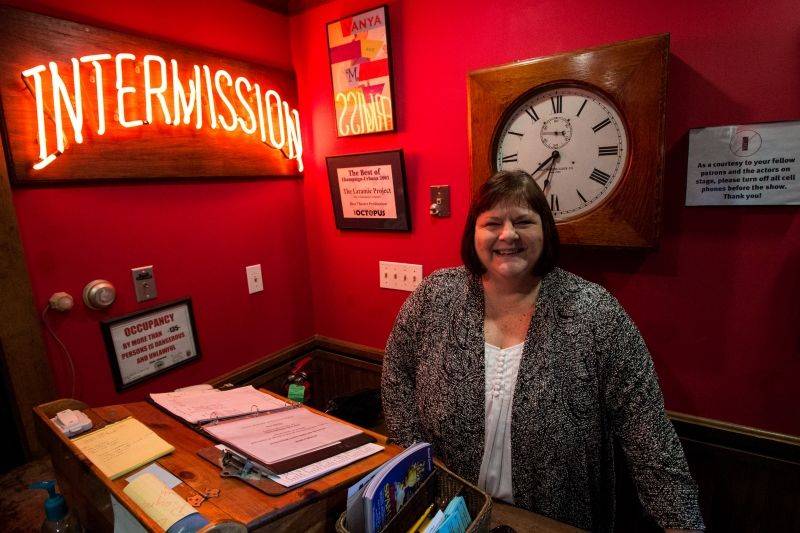
Holley met Rick Orr, the Artistic Director of the Station, when he, too, was studying “interp” at the University of Illinois. It was around this time (roughly 1978) that she attended her first Station show. It wasn’t until ’84, however, that she appeared in her first production at the little black box theatre on the railroad tracks in Urbana. She appeared that year in Talking With…, followed by Agnes of God two years later.
There followed, by her own admission, a “dark period,” during which she did not attend, perform, or really think about theatre. She was, at this time, too busy being a single mom and raising her kids.
It wasn’t until she was in her forties that she directed her first real play. Up to that point, Holley said she rarely read plays unless they were assigned to her in a class or she was acting in one. Then came the early nineties and the Station Theatre’s Gary Ambler. Holley had come back to the Station, worked on a couple of shows, and was then asked by Ambler if she might be interested in reading for his production of Terrence McNally’s Lips Together, Teeth Apart (1992). She was cast and “had a great time.”
“At the time, and still, Gary was considered the Station’s ‘acting god,’ so his stamp of approval made me feel welcome and accepted,” she told me.
[I will add here, in a personal aside, that it was Holley’s approval, along with that of Ambler and Barbara Evans, that made me feel as if I had “made it” at the Station. I directed the three of them in Martin McDonagh’s The Cripple of Inishmaan, and having those three local legends in my play was both a trial by fire and a giant feather in my cap.]
In 1994 came Marvin’s Room. In it, Holley played Bessie, her first true lead, and, as she says, “That was it.” Within a year, she was on the Station’s Board of Directors and has been steadily involved in one aspect or another ever since. Twenty years now and counting.
Shortly after Marvin’s Room, Holley was encouraged by Gary Ambler to try her hand at directing. Spurred on by his confidence in her prospects, she “wandered into it like a babe in the woods” and took the helm of no less than Edward Albee’s Three Tall Women (1997). For anyone who might not be familiar, this is a pretty audacious undertaking, even for a seasoned director. Discovering that this had been her Station debut, I had to ask, Where did your directorial instincts come from? After giving me a look that seemed to indicate What instincts?, Holley told me that oral interpretation gave her the confidence to go from “page to stage,” as it were. It had involved her imagination and intelligence, nurtured by years of (and love for) literature.
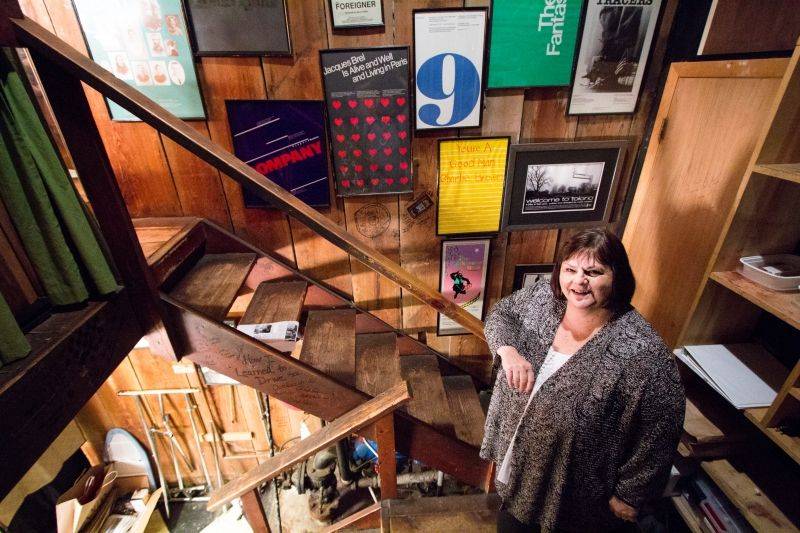
It’s customary for Holley to downplay her gifts as a director, choosing instead to highlight the talent of her ensemble or the strength of the script itself. But, in spite of this modesty, she has become truly appreciated as a director, guiding her casts through plays that are often emotionally turbulent. Many an actor, myself included, can point to their work in a Holley-directed play as some of the best of their lives, recalling the introspection and honesty that she often requires.
So, what is her process (he asked, knowing that it’s a cliché question to ask a director)? She told me that she doesn’t plan much before rehearsals begin, preferring instead to let the rehearsals themselves form her “concept” for the play. She goes in with a feeling about the play, an idea of what should transpire, but she genuinely enjoys the collaborative aspect, letting the relationships and action develop organically: “I love working with other people, talking things through, everyone investing part of themselves in what’s happening.”
What is her favorite part of the process? “That amazing celebration of the human,” she says. “It’s almost spiritual.”
Holley initially thought her lack of prior play-reading would be a detriment to her as a director, but that hasn’t been the case. Although there are definitely plays she has loved and suggested for the Station, she has steadily taken on projects suggested to her by others, working as a sort of hired gun. “I feel my luck to have directed good plays so that, when people read something they like, they think, ‘Kay would do this well.’”
She has a hard time thinking of herself as a “theatre artist,” but she has served on the Board or acted on behalf of the play selection committee for years, keeping herself involved in the Station and remaining a vital part of its ongoing mission. Within the theatre, when not directing or acting in a play, she sees herself as a “facilitator,” helping to shepherd new artists or, occasionally, to find common ground between the generations. To a lot of the young company, she is viewed as a den mother of sorts. As previously mentioned, she is first and foremost a teacher.
And what sort of play is a “Kay Holley play?”
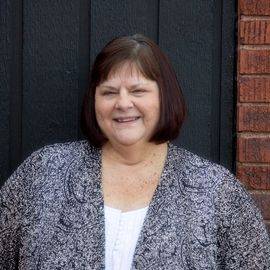 Although Three Tall Women bends Albee’s usual cerebral reality into actual magical realism, Holley has stated that she tends toward “living-room realism.” It’s her preference and strength, she says, and a look back through her credits bears that out. Families in turmoil, hidden agendas, strained love, longings for self and safety … these are the hallmarks of a “Kay Holley show,” in my estimation, and I’m always excited when I find that her next endeavor will be such a play.
Although Three Tall Women bends Albee’s usual cerebral reality into actual magical realism, Holley has stated that she tends toward “living-room realism.” It’s her preference and strength, she says, and a look back through her credits bears that out. Families in turmoil, hidden agendas, strained love, longings for self and safety … these are the hallmarks of a “Kay Holley show,” in my estimation, and I’m always excited when I find that her next endeavor will be such a play.
Speaking of which (and here we smash-cut to the present), Holley brought all of these strengths of hers (as well as those of a smashing cast) to her most recent production, Jon Robin Baitz’s Other Desert Cities. I interviewed Holley towards the end of her rehearsal period about the show’s merits and potential, and our talk was subsequently published on the Smile Politely website.
I was asked by Holley to attend a dress rehearsal for Other Desert Cities two nights before it opened, last April, and attend I did. After an absence from the Station of more than a year, Holley’s invitation was one I could not pass up. The rehearsal was run under “show conditions,” meaning that it began at the usual 8:00 p.m. curtain time and had an intermission. There were no stops, no calls for forgotten lines, no questions about motivation or blocking, and no adjustments by the crew. There was, in other words, no net. This was (or would have been, but for my presence) a performance for Holley herself, to see what she had wrought.
As I sat behind her, watching her make the occasional note on her legal pad or flinch ever so slightly at a flubbed line, I remembered what it was like to perform for her. I thought about the care and generosity and confidence that she had given me and countless other actors, making all of us better than we had been before we took the stage for her. And then, as the show clipped along and family secrets were spilled and personal truths were told, I thought about the fleeting nature of theatre — about how a performance is only for that audience, that night.
I thought about the countless actors who still, when they step on stage, are performing only for Kay Bohannon Holley.
Photos by Sam Logan.








